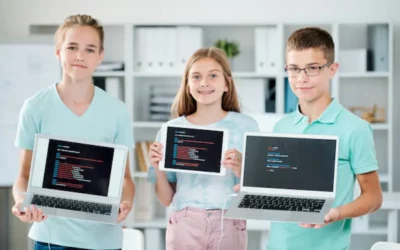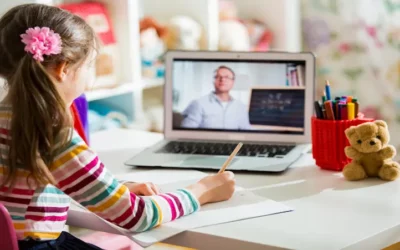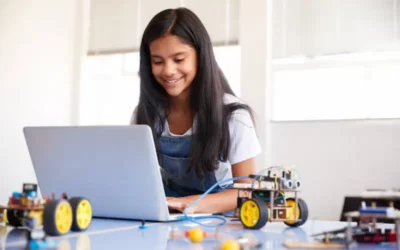Welcome, curious parents and enthusiastic youngsters, to an extraordinary adventure into the world of coding languages tailored just for kids! If you’re reading this, chances are you’ve heard the buzz about the wonders of coding and its potential to unlock a world of creativity, problem-solving, and digital wizardry. Well, hold on tight, because we’re about to embark on a journey where fun and learning collide in a flurry of pixels, algorithms, and boundless imagination.
In this guide, we’ll unravel the mystery of coding languages designed specifically with your child in mind. You may be wondering, “Why should my child learn computer coding for kids?” Great question! Apart from being an incredibly sought-after skill in today’s tech-driven world, coding fosters logical thinking, sharpens problem-solving abilities, and nurtures those all-important 21st-century skills that set young minds up for success
So, grab your thinking caps, fasten your seatbelts, and get ready to embark on an exhilarating journey through the world of coding languages for kids. Together, we’ll unleash the potential of young minds, one line of code at a time. Are you ready? Let’s dive into this captivating realm of bits, bytes, and endless possibilities!
Before diving into the blog, check out this video below.
Table of contents
- Why Teach Kids Coding?
- Benefits of Kids Coding Languages
- Popular Kids Coding Languages
- Python: A Versatile Language for Young Coders
- Scratch: Unleashing Creativity Through Visual Programming
- Java for Kids: Learning to Code
- Swift: Coding for iOS Apps and Games
- Blockly: Intuitive Coding with Blocks
- Ruby: Simple and Beginner-Friendly
- Lua Programming for Roblox Fans
- Go: A Modern Language for Aspiring Programmers
- JavaScript: Bringing Interactivity and Web Development Skills
- C#: Building Desktop Applications and Games
- Resources for Kids Coding Languages
- Comparison of Kids Coding Languages
- How to Choose the Best Coding Language for Your Child?
- Coding Tools and Resources for Kids
- Recommended Coding Tools and Resources
- Interactive Coding Exercises for Kids
- Conclusion
- Frequently Asked Questions
Why Teach Kids Coding?
Teaching kids coding can provide them with problem-solving and critical thinking skills, unleash their creativity and innovation, boost their confidence in using technology, and offer valuable skills for future job opportunities. It’s a fun and engaging way to prepare them for a tech-driven world.
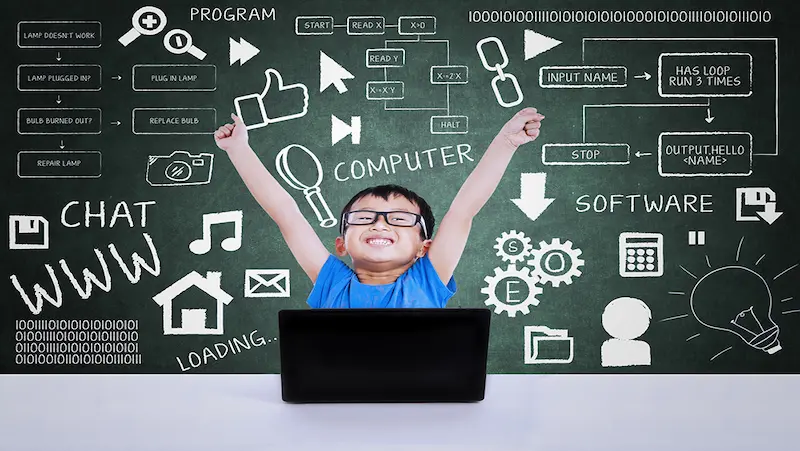
Enhancing Problem-Solving Skills
Coding encourages children to break down complex problems into smaller, more manageable tasks. By solving coding challenges, young learners develop critical thinking abilities, analytical skills, and the persistence to overcome obstacles. These problem-solving skills are transferable and can be applied to various real-life situations.
Fostering Creativity and Innovation
Coding empowers children to express their creativity and turn their ideas into reality. They can create stories, animations, games, and interactive projects, allowing their imaginations to come to life through coding. This creative outlet nurtures innovative thinking and encourages children to think outside the box.
Building Resilience and Perseverance
Coding often involves trial and error, with coders continuously testing and refining their code to achieve the desired outcome. Through this iterative process, children learn to embrace failure as a stepping stone to success. They develop resilience, perseverance, and a growth mindset, essential qualities for overcoming challenges in any field.
Promoting Collaboration and Communication
Coding is not a solitary endeavor. It encourages collaboration and teamwork as kids often work together on coding projects, sharing ideas, and solving problems collectively. Moreover, coding communities and coding clubs provide platforms for children to interact, share their work, and learn from their peers, fostering valuable social and communication skills.
Benefits of Kids Coding Languages
Teaching coding to children has several advantages that go beyond coding itself. Let’s examine a few of these benefits:
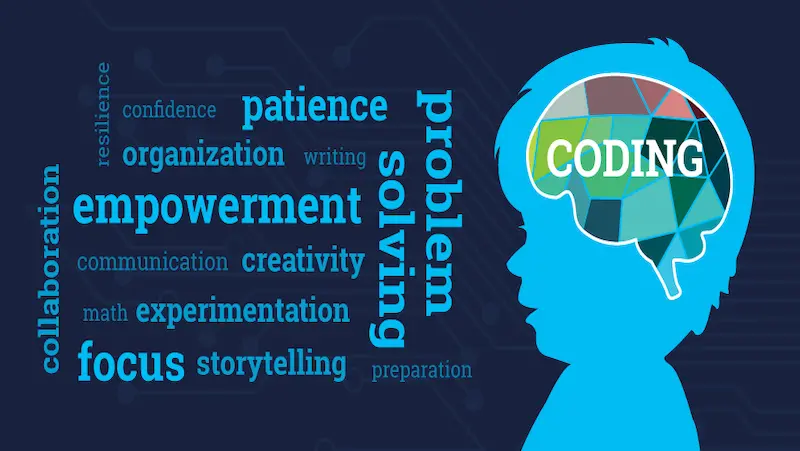
Cognitive Development
Children’s cognitive growth is stimulated by coding. It improves their capacity for logical reasoning, pattern detection, and analytical thought. Children gain a stronger understanding of computational ideas and problem-solving techniques by modifying code and examining the cause-and-effect interactions.
Academic Performance
Studies have shown that coding can positively impact academic performance. The analytical and problem-solving skills acquired through coding can enhance mathematical aptitude, critical thinking, and academic success in other subjects. Moreover, coding helps children develop strong attention to detail and organizational skills.
Future Career Opportunities
In an increasingly technology-driven world, coding skills are highly sought after by employers. By introducing kids to coding languages early on, you are equipping them with a valuable skill set that opens doors to future career opportunities. From software development and web design to data analysis and artificial intelligence, the possibilities are endless.
Empowerment and Confidence
As children learn to code and create projects, they gain a sense of empowerment and accomplishment. Coding instills confidence in their abilities to solve problems and build things on their own. This newfound confidence extends beyond coding and positively impacts their overall self-esteem and approach to challenges in life.
Popular Kids Coding Languages
There is a wide range of coding languages suitable for kids of different ages and skill levels. Here are some popular kids coding languages that offer engaging learning experiences:
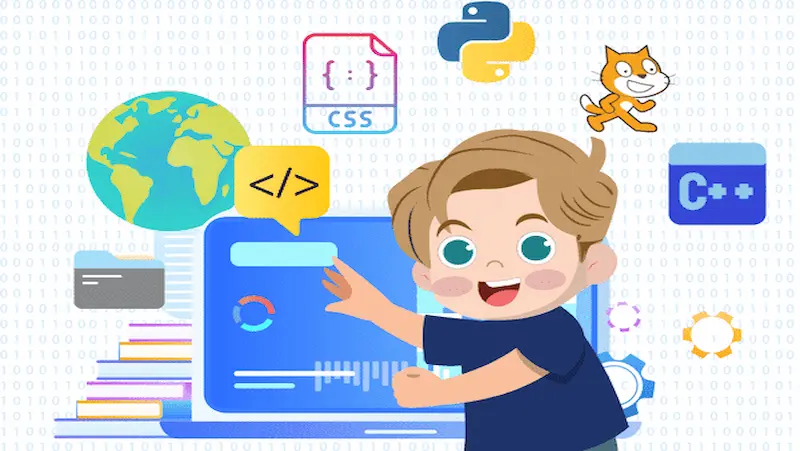
Python: A Versatile Language for Young Coders
Python is a great option for teaching kids the basics of coding programs for kids. It’s a user-friendly programming language that’s easy to learn and understand with simple syntax. Python can be used in many different areas of computer science such as web development and artificial intelligence.
Kids can also use it to create computer games for kids or interactive stories using text-based or animation platforms. With online communities like Twitter or the MIT Scratch website hosting tutorials and videos that cater specifically to young coders looking to get started with Python for kids, it’s no wonder why this programming language has become one of the best beginner coding languages for kids.
Scratch: Unleashing Creativity Through Visual Programming
Scratch is a powerful platform that unleashes creativity through visual programming for kids. It provides a user-friendly interface that allows individuals, especially beginners, and children, to create interactive stories, animations, games, and more. With its block-based coding system, users can drag and snap together blocks of code, eliminating the need for complex syntax.
This approach makes programming accessible and fun for people of all ages, fostering creativity and problem-solving skills. Scratch empowers users to express their ideas and bring them to life, nurturing a community of innovators and makers.
Java for Kids: Learning to Code
For kids interested in technology, Java is a great option to begin coding with. It has a user-friendly syntax that makes it easy for beginners to read and write lines of code.
With its structured approach to coding, it helps instill a sense of problem-solving in young coders. Java can be used to create animation and video game design or web development, making it one of the best programming languages.
Online communities like Twitter and Google offer tutorials tailored explicitly toward teaching kids how to code in Java. Learning Java is an exciting way for young kids to get started on their coding journey and acquire essential object-oriented programming skills.
Swift: Coding for iOS Apps and Games
Swift is a powerful programming language designed specifically for developing iOS apps and games. Developed by Apple, Swift offers a modern and concise syntax that makes it easier for developers to write clean and efficient code.
With its robust features and extensive libraries, Swift enables developers to create immersive and interactive experiences for Apple devices. Whether you’re a beginner or an experienced coder, Swift provides a user-friendly environment for building innovative iOS applications and captivating games.
Blockly: Intuitive Coding with Blocks
Blockly is an intuitive coding platform that simplifies programming through the use of blocks. It provides a visual interface where users can drag and drop blocks to create their code instead of writing complex syntax. This approach makes coding for kids accessible to beginners and promotes learning through experimentation.
With Blockly, users can easily understand programming concepts and quickly build interactive applications. Its simplicity and versatility make Blockly an excellent tool for teaching coding and fostering creativity in both children and adults.
Ruby: Simple and Beginner-Friendly
Ruby is a great option for teaching kids the basics of coding. This object-oriented programming language has a user-friendly interface and simple syntax that makes it easy for young kids to understand.
With built-in graphics and game development tools, it’s a great way to introduce kids to video game design. Plus, there’s an active online community where coders share tutorials and resources specifically designed for young coders learning Ruby.
Whether your child wants to pursue web development or app development later on in life or even delve into artificial intelligence or robotics, learning Ruby can help develop problem-solving skills that will serve them well in any field they choose.
Lua Programming for Roblox Fans
If your kid loves playing Roblox and would like to create their own game or interactive experience within the platform, Lua programming language is a great way to get started.
Lua is a simple and easy-to-learn programming language that is user-friendly for young kids and beginners alike. It teaches kids problem-solving skills and enhances their creativity while having fun at the same time.
Moreover, Lua programming language isn’t just limited to Roblox; it’s also used in other popular games such as World of Warcraft and Angry Birds. By learning Lua, your child can open up new doors of opportunity in game design and app development.
Go: A Modern Language for Aspiring Programmers
Go, also known as Golang, is a modern programming language that has gained significant popularity among aspiring programmers. Developed by Google, Go is designed to be simple, efficient, and highly readable, making it an ideal choice for beginners.
One of the key features of Go is its focus on simplicity. The language has a clean and concise syntax, which reduces the learning curve for new programmers. Go’s straightforward design encourages good coding practices and promotes writing clean, maintainable code.
JavaScript: Bringing Interactivity and Web Development Skills
JavaScript is a powerful programming language that revolutionizes web development by adding interactivity to websites. With its versatility and widespread support, JavaScript enables developers to create dynamic and engaging user experiences.
Through JavaScript, developers can manipulate web page elements, respond to user actions, and dynamically update content without requiring a page reload. This interactivity allows for real-time feedback, smooth animations, and enhanced user interfaces.
JavaScript is widely supported by modern web browsers, making it accessible to a vast audience. Its versatility extends beyond the web, as JavaScript can now be used for server-side development, mobile applications, and even desktop applications.
C#: Building Desktop Applications and Games
C# (pronounced “C sharp”) is a powerful programming language that allows developers to build desktop applications and games with ease. With its object-oriented nature and extensive library support, C# provides a robust framework for creating user-friendly and visually appealing software.
When it comes to desktop applications, C# offers a wide range of features to streamline development. The Windows Presentation Foundation (WPF) framework, built on top of C#, enables developers to create modern and responsive user interfaces. Its rich set of controls, data binding capabilities, and layout options make it ideal for creating feature-rich desktop applications.
Resources for Kids Coding Languages
Teaching children coding languages is a fantastic way to foster their creativity, problem-solving skills, and computational thinking abilities. Fortunately, there are numerous resources available to support kids in learning coding languages. Whether they prefer online platforms, coding apps, coding camps and coding class for kids, books, or online communities, there are options to suit every child’s learning style and preferences. Let’s explore some of the popular resources in each category.
Online Platforms:
Online platforms provide interactive and engaging coding lessons for kids of all ages. They typically offer step-by-step tutorials, interactive coding environments, and projects that help children apply their newly acquired skills. Some of the notable online platforms for kids coding languages include:
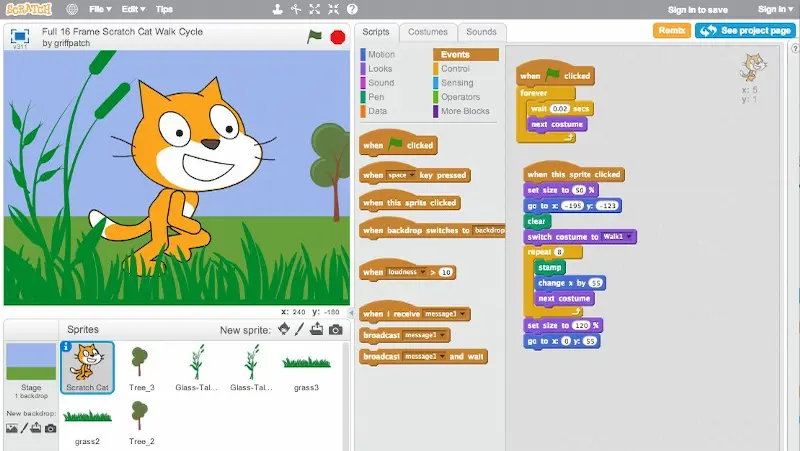
Codechamps by Brightchamps is an excellent platform that introduces kids to the concepts of coding in a fun and interactive way. The curriculum is designed in such a way that with each lesson, your kids grow a step closer to being the best coding wizards in this world!
Code.org: Code.org offers a wide range of free coding courses suitable for different age groups. It features game-based learning and popular themes like Minecraft and Star Wars to make coding fun and engaging for kids.
Scratch: Developed by the Lifelong Kindergarten Group at MIT, Scratch is a visual programming language designed for children aged 8 and above. It allows kids to create interactive stories, animations, and games by dragging and dropping blocks of code.
Tynker: Tynker offers coding courses for kids aged 5 and above. It utilizes a visual programming interface and provides a variety of projects, puzzles, and challenges to develop kids’ coding skills.
Coding Apps:
Coding apps are an excellent option for learning on the go. They are often designed as games, making the learning experience enjoyable and interactive. Here are a few notable coding apps for kids:
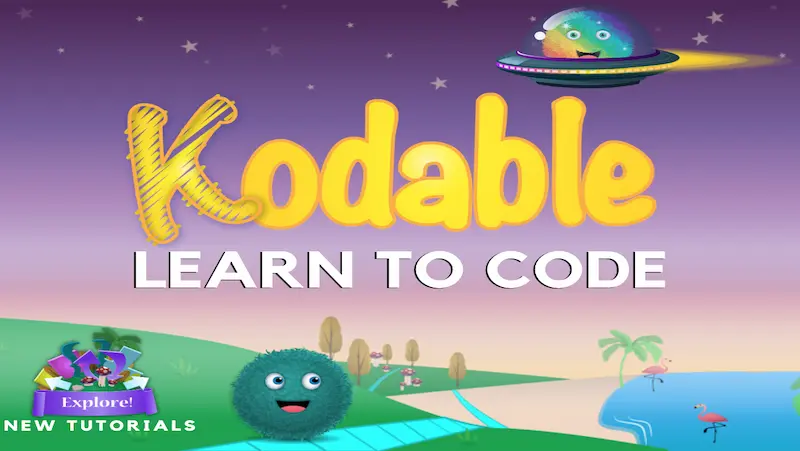
Hopscotch: Hopscotch is a creative coding app that allows kids to create their own games, animations, and interactive stories. It features a visual programming interface and encourages experimentation and creativity.
Swift Playgrounds: Developed by Apple, Swift Playgrounds introduces kids to the Swift programming language. It offers interactive puzzles and challenges to teach coding concepts in a fun and engaging way.
Kodable: Kodable is designed for younger children (ages 4-10) and teaches the fundamentals of coding through a series of games and activities. It covers concepts like sequencing, loops, and conditionals.
Coding Camps and Classes:
Coding camps and free coding classes for kids provide structured learning environments and hands-on guidance for kids. They offer a great opportunity for children to learn coding alongside their peers. Some well-known coding boot camps and coding classes for kids include:
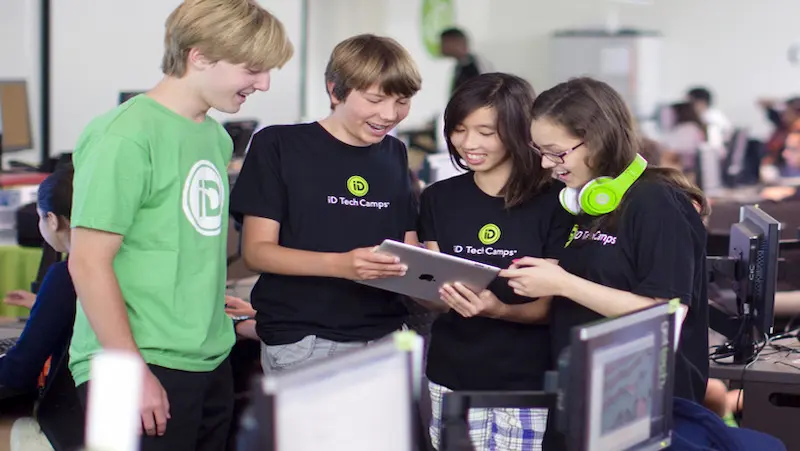
iD Tech: iD Tech offers summer camps, online courses, and one-on-one instruction in coding and other STEM subjects. They provide a wide range of coding languages and technologies suitable for different skill levels and age groups.
Coding Dojo: Coding Dojo offers coding boot camps for kids where they can learn various programming languages and build real-world projects. The camps are available both in-person and online.
Girls Who Code: Girls Who Code is an organization that aims to close the gender gap in technology fields. They offer coding clubs, summer immersion programs, and after-school learning programs for kids specifically designed for girls.
Books and Educational Kits:
Books and educational kits provide offline learning experiences and can be valuable resources for kids interested in coding. Here are a few notable options:
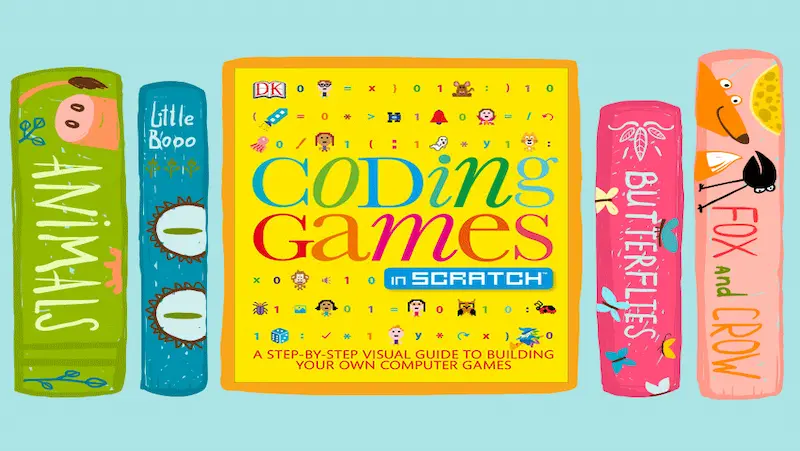
“Coding Games in Scratch” by Jon Woodcock: This book teaches kids how to create their own games using Scratch, introducing coding games for kids in a playful manner.
“Hello Ruby” by Linda Liukas: “Hello Ruby” is a book series that combines storytelling and coding. It follows the adventures of a young girl named Ruby, teaching programming concepts along the way.
Raspberry Pi Starter Kits: Raspberry Pi starter kits provide a physical computing experience for kids. They include a Raspberry Pi microcomputer and various components to build and program projects like robots or home automation systems. Check out more books for kids.
Online Communities:
Online communities provide a platform for kids to connect with fellow coders, seek help, and showcase their projects. They create a sense of belonging and foster collaboration. Some notable online communities for kids coding languages include:
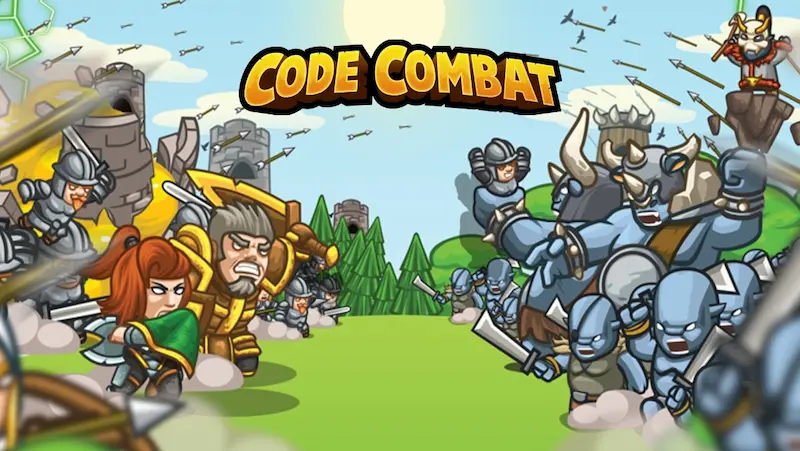
Scratch Community: The Scratch Community is an online forum where kids can share their Scratch projects, get feedback, and collaborate with others.
CodeCombat: CodeCombat is an online multiplayer game that teaches coding. It features a community forum where kids can interact, compete, and help each other solve coding challenges.
Khan Academy: Khan Academy offers coding courses and a community forum where students can engage in discussions, ask questions, and get support from peers and mentors.
Comparison of Kids Coding Languages
Teaching kids coding is a great way to introduce them to computer science and problem-solving skills. When it comes to choosing the best programming language for kids, you have several options available.
Python is a popular text-based programming language that has been adapted for use by kids with simple syntax and easy-to-understand language. Java is another great option for teaching kids how to code as it can be used in video game creation or app development.
For younger coders who prefer block-based programming languages, Scratch is a visual programming language designed for kids with drag-and-drop blocks to create code while Blockly has a more polished interface that’s similar to Scratch.
Lua Programming is an easy-to-learn scripting language perfect for beginners who want to create interactive stories or gaming apps.
In conclusion, all of these languages come with their own unique features that make them great choices for young programmers looking to get started with coding.
How to Choose the Best Coding Language for Your Child?
When selecting the best programming language for young kids to learn, there are several essential factors parents should consider.
It is crucial to start by taking into account their child’s age, skill level, and interests before picking a coding language. Parents should look for beginner-friendly coding languages that have a user-friendly interface like block-based or visual programming, alongside easy-to-understand syntax like Python or JavaScript.
It is also important to choose programming languages that have readily available online resources and tutorials to facilitate learning & encourage children to experiment with different coding languages.
Coding Tools and Resources for Kids
In today’s digital age, coding is a valuable skill that empowers kids to be creative, think critically, and problem-solve. Whether they aspire to become software developers or just want to dabble in coding for fun, there’s a wide array of coding tools and resources available to help kids get started on their coding journey. Here’s a list of recommended coding tools, software, websites, and hardware, along with interactive coding exercises to engage and challenge young learners.
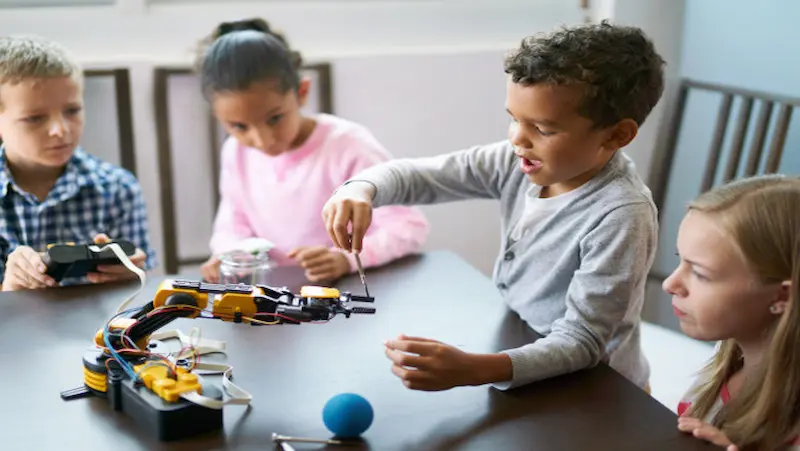
Recommended Coding Tools and Resources
1. Scratch
Features: Scratch is a block-based visual programming language designed for children. It allows kids to create interactive stories, animations, and games by snapping together code blocks.
Advantages: Scratch is intuitive and user-friendly, making it an excellent choice for beginners. It fosters creativity and problem-solving skills.
Target Age Group: Ideal for kids aged 8 and above.
2. Tynker
Features: Tynker offers game-based coding activities and interactive coding lessons that cover various programming concepts. It also supports web development and Minecraft modding.
Advantages: Tynker provides a structured learning path, coding challenges, and creative projects to engage kids in coding.
Target Age Group: Suitable for children aged 7 and up.
3. Code.org
Features: Code.org offers a wide range of free coding tutorials and activities, including courses that introduce coding through popular characters like Elsa from “Frozen” and Minecraft.
Advantages: It’s a non-profit organization that promotes computer science education, and its resources are free and accessible to all.
Target Age Group: Suitable for children of all ages.
4. Ozobot
Features: Ozobot is a small programmable robot that kids can code using color-coded markers or a visual programming environment. It teaches basic coding concepts in a fun and hands-on way.
Advantages: Ozobot bridges the gap between physical and digital coding, making it a unique and engaging tool.
Target Age Group: Appropriate for kids aged 6 and older.
5. Raspberry Pi
Features: Raspberry Pi is a small, affordable computer that allows kids to learn programming in a real-world context. It can be used to build various electronic projects.
Advantages: It provides hands-on experience with hardware and software, making it perfect for kids interested in tinkering and electronics.
Target Age Group: Recommended for children aged 11 and up.
Interactive Coding Exercises for Kids
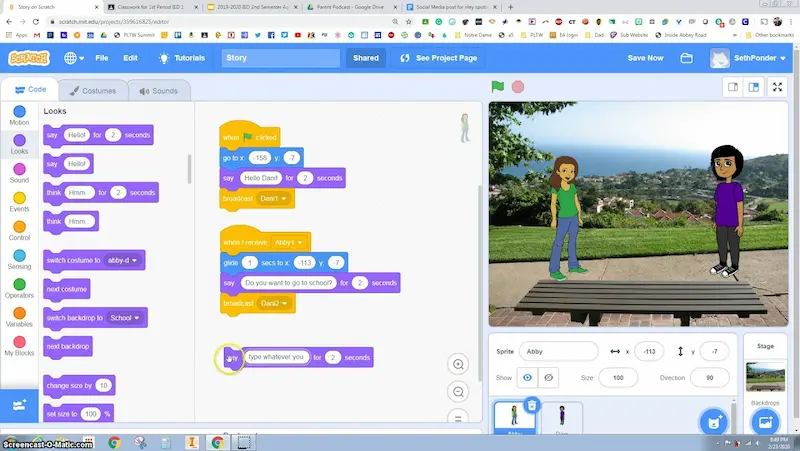
Creating a Story with Scratch: Encourage kids to use Scratch to build their own interactive story. They can code characters to move, speak, and respond to user input, fostering creativity and storytelling skills.
Tynker Coding Challenges: Challenge kids to complete coding challenges available on Tynker. These challenges cover various concepts like loops, conditionals, and variables, helping kids develop problem-solving abilities.
Minecraft Modding with Code.org: If your child is a Minecraft enthusiast, introduce them to coding by creating custom Minecraft mods using Code.org’s tutorials. This exercise merges gaming with coding.
Ozobot Color Codes: Ask kids to code an Ozobot using color-coded markers. They can create a path with different colors, and Ozobot will follow the instructions, teaching them sequencing and logic.
Raspberry Pi Project: For older kids, embark on a Raspberry Pi project such as building a retro gaming console or a home automation system. It’s an excellent way to apply coding knowledge in real-world scenarios.
Coding tools and resources for kids offer a gateway to a world of creativity and problem-solving. These recommended tools and exercises can help children develop essential skills while having fun exploring the exciting realm of coding. So, whether your child dreams of becoming a programmer or just wants to tinker with technology, there are best online coding classes for kids suitable for every young learner.
Conclusion
Teaching kids coding is essential, as it helps develop their problem-solving and critical thinking skills while also giving them a head start in today’s digital world. With so many coding languages and apps to choose from, it can be challenging to know where to start. So now you know what is coding for kids free and how to get your kids started with it!
From Python and Java to HTML and CSS, there are several fun and easy programming languages for kids of all ages. Check out our blog post on the top recommended courses, the best apps for learning coding, additional resources for parents, and a comparison of kids coding languages to help you choose the best language for your child.
To get your hands on more such educational and free resources on coding for kids, robotics, game development, etc., do check out the BrightCHAMPS Page now!
Frequently Asked Questions
Ans 1. Coding languages are the process of giving computers instructions in a language that they understand. It is important to learn because it teaches you important skills such as critical thinking, problem-solving, and creativity.
Ans 2. We have several fun and easy programming languages for kids of all ages. In this blog post, we have carefully curated a list of all the popular u0026 recommended courses and programming languages for your child.
Ans 3. The ideal age for children to begin learning coding languages depends on their interests and comprehension level. Kids as young as 5 or 6 can start with user-friendly languages like Scratch or Blockly, while those aged 8 and above can progress to more complex languages like Python or JavaScript.
Ans 4. Kids can start learning coding languages without any specific prerequisites. Visual block-based coding languages like Scratch or Blockly are a great starting point, progressing to text-based languages like Python or JavaScript. While a basic understanding of math and logic can be helpful, it’s not necessary to begin learning.
Ans 5. When teaching coding to kids, use fun and interactive tools like games and puzzles, break down complex concepts into smaller parts, and encourage creative experimentation. A project-based approach lets kids apply their knowledge by creating something tangible while allowing them to learn from their mistakes.
Ans 6. They can learn programming languages such as Python or Javascript, develop mobile apps or games, and even create animations or graphics. We also have block-based coding u0026 game development courses.
Ans 7. We ensure that kids receive personalized attention in our free coding classes for kids by limiting class sizes, dividing children into smaller groups, assigning projects based on their skill levels and interests, and encouraging one-on-one interaction between instructor and child. This approach helps us provide tailored instruction to each student.
Ans 8. We have various programs u0026 courses with different time durations u0026 frequencies. You can check out our Curriculum for more information.
Ans 9. We understand the importance of tracking your child’s coding journey. Our coding classes employ various assessment methods, including coding projects, quizzes, and practical exercises.
These assessments allow us to gauge your child’s understanding of coding concepts, problem-solving abilities, and progress over time. We provide regular feedback and progress reports to keep you informed about your child’s growth and achievements in the coding classes.
Ans 10. Learning to code can benefit children by developing their problem-solving and critical thinking abilities, boosting creativity, and encouraging collaboration.
These skills are transferable to a range of industries, including technology, engineering, and the arts. By learning coding languages, children can gain valuable skills that will be useful in their future careers.

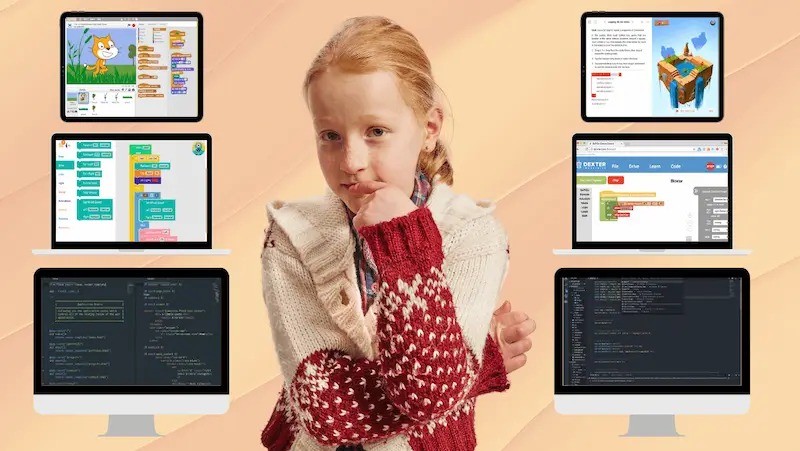
 We are an army of educators and passionate learners from BrightChamps family, committed to providing free learning resources to kids, parents & students.
We are an army of educators and passionate learners from BrightChamps family, committed to providing free learning resources to kids, parents & students.








